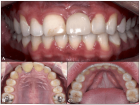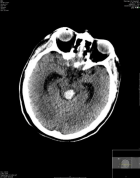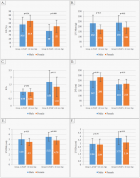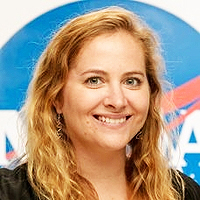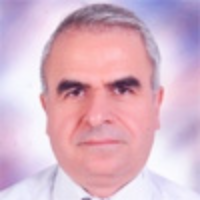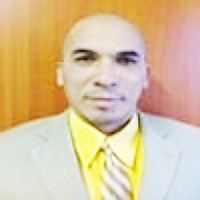Abstract
Research Article
The development of urotherapy in pediatric care and the training of urotherapists
Anna-Lena Hellström*, Birgitta Lindehall and Ulla Sillén
Published: 05 January, 2023 | Volume 7 - Issue 1 | Pages: 001-005
The terms urotherapy and urotherapist are often mentioned in the literature, but their origins and meanings are less well-known.
Objective: To describe the background and development of the concept of urotherapy in pediatric care and the profession of urotherapist.
Methods: Data has been searched for in Medline PubMed and selection has been limited to papers important for the purpose.
Results: Understanding of urinary bladder function was developed in the 1970’s, mainly due to new urodynamic methods opened up for possible treatment options. Standard urotherapy is a concept developed in the 1980’s and aims to treat dysfunction by helping the patient to learn to understand bladder function and then practice certain techniques in order to normalize it. To succeed, guidance and support are needed from a skilled urotherapist. In Scandinavian and German-speaking countries, quality-assured training for urotherapists at the university level is available.
Conclusion: Urotherapy standard therapy is a non-invasive treatment recommended as the first-choice treatment for lower urinary tract disorders. However, we must have requirements as to what knowledge a urotherapist needs to have, and training has to be certified and be at the university level.
Read Full Article HTML DOI: 10.29328/journal.cjncp.1001044 Cite this Article Read Full Article PDF
Keywords:
Urotherapy; Urotherapist; Training; Urinary bladder dysfunction; Children
References
- Hellström AL. Dysfunctional bladder in children Studies in epidemiology and urotherapy. Ph.D. thesis, University of Gothenburg. 1990.
- Hinman F, Baumann FW. Vesical and ureteral damage from voiding dysfunction in boys without neurologic or obstructive disease. J Urol. 1973 Apr;109(4):727-32. doi: 10.1016/s0022-5347(17)60526-3. PMID: 4695119.
- Allen TD. The non-neurogenic neurogenic bladder. J Urol. 1977 Feb;117(2):232-8. doi: 10.1016/s0022-5347(17)58412-8. PMID: 833977.
- Koff SA, Lapides J, Piazza DH. Association of urinary tract infection and reflux with uninhibited bladder contractions and voluntary sphincteric obstruction. J Urol. 1979 Sep;122(3):373-6. doi: 10.1016/s0022-5347(17)56417-4. PMID: 470012.
- Griffiths DJ. Hydrodynamics of male micturition. II. Measurements of stream parameters and urethral elasticity. Med Biol Eng. 1971 Nov;9(6):589-96. doi: 10.1007/BF02474638. PMID: 5158810.
- Abrams PH, Griffiths DJ. The assessment of prostatic obstruction from urodynamic measurements and from residual urine. Br J Urol. 1979 Apr;51(2):129-34. doi: 10.1111/j.1464-410x.1979.tb02846.x. PMID: 465971.
- Wennergren HM, Oberg BE, Sandstedt P. The importance of leg support for relaxation of the pelvic floor muscles. A surface electromyograph study in healthy girls. Scand J Urol Nephrol. 1991;25(3):205-13. doi: 10.3109/00365599109107948. PMID: 1947848.
- DeLancey JO. Anatomy and physiology of urinary continence. Clin Obstet Gynecol. 1990 Jun;33(2):298-307. doi: 10.1097/00003081-199006000-00014. PMID: 2190733.
- Engel GL. The clinical application of the biopsychosocial model. J Med Philos. 1981 May;6(2):101-23. doi: 10.1093/jmp/6.2.101. PMID: 7264472.
- Lindström B. The essence of existence. On the quality of life of children in the Nordic countries. 1994; Ph. D thesis, The Nordic School of Public Health. Gothenburg.
- Coggrave M, Wiesel PH, Norton C. Management of faecal incontinence and constipation in adults with central neurological diseases. Cochrane Database Syst Rev. 2006 Apr 19;(2):CD002115. doi: 10.1002/14651858.CD002115.pub3. Update in: Cochrane Database Syst Rev. 2013;12:CD002115. PMID: 16625555.
- Loening-Baucke V. Encopresis and soiling. Pediatr Clin North Am. 1996; 43: 279-98
- van Gool JD, Kuitjen RH, Donckerwolcke RA, Messer AP, Vijverberg M. Bladder-sphincter dysfunction, urinary infection and vesico-ureteral reflux with special reference to cognitive bladder training. Contrib Nephrol. 1984;39:190-210. doi: 10.1159/000409249. PMID: 6744871.
- Maizels M, King LR, Firlit CF. Urodynamic biofeedback: a new approach to treat vesical sphincter dyssynergia. J Urol. 1979 Aug;122(2):205-9. doi: 10.1016/s0022-5347(17)56331-4. PMID: 459015.
- Hjälmås K, Hellström AL. Habilitation of dysfunctional bladder in children. Proceedings of th 11th annual meeting of ICS 1981; 48.
- Hellström AL, Hjälmås K, Jodal U. Rehabilitation of the dysfunctional bladder in children: method and 3-year followup. J Urol. 1987 Oct;138(4):847-9. doi: 10.1016/s0022-5347(17)43395-7. PMID: 3656544.
- Nieuwhof-Leppink AJ, Hussong J, Chase J, Larsson J, Renson C, Hoebeke P, Yang S, von Gontard A. Definitions, indications and practice of urotherapy in children and adolescents: - A standardization document of the International Children's Continence Society (ICCS). J Pediatr Urol. 2021 Apr;17(2):172-181. doi: 10.1016/j.jpurol.2020.11.006. Epub 2020 Nov 5. PMID: 33478902.
- Lapides J, Diokno AC, Silber SJ, Lowe BS. Clean, intermittent self-catheterization in the treatment of urinary tract disease. J Urol. 1972 Mar;107(3):458-61. doi: 10.1016/s0022-5347(17)61055-3. PMID: 5010715.
- Hannigan K, Elder JS. Teaching catheterization to children. Urol Clin North Am. 1988 Nov;15(4):653-60. PMID: 3055617.
- Madesbacher H, Pauer W, Reiner E. Rehabilitation of micturition by transurethral electrostimulation of the bladder in patients with incomplete spinal cord lesion. Paraplegia. 1982; 20:191-5.
- Madersbacher H, Ebner A. Intravesical electrostimulation. A useful help in the (re)habilitation of micturition in children with a lazy bladder syndrome. Urodinamica. 1992; 1:71–7.
- Gladh G, Mattsson S, Lindström S. Intravesical electrical stimulation in the treatment of micturition dysfunction in children. Neurourol Urodyn. 2003;22(3):233-42. doi: 10.1002/nau.10078. PMID: 12707874.
- Bower W, Yeung CK. A review of non-invasive electro neuromodulation as an intervention for non-neurogenic bladder dysfunction in children. Neurourol Urodyn. 2004; 23: 63–7.
- Laycock J. Graded exercises for the pelvic floor muscles in the treatment of urinary incontinence. Physiotherapy 1987; 73: 371-3.
- Bø K, Hagen R, Kvarstein B, Jørgensen J, Larsen S. Pelvic floor muscle exercise for the treatment of female stress urinary incontinence: III Effects of two different degrees of pelvic floor muscle exercises. Neurourol Urodyn. 1990; 9: 489-502
- De Paepe H, Hoebeke P, Renson C, Van Laecke E, Raes A, Van Hoecke E, Van Daele J, Vande Walle J. Pelvic-floor therapy in girls with recurrent urinary tract infections and dysfunctional voiding. Br J Urol. 1998 May;81 Suppl 3:109-13. doi: 10.1046/j.1464-410x.1998.00021.x. PMID: 9634033.
- Buckley BS, Sanders CD, Spineli L, Deng Q, Kwong JS. Conservative interventions for treating functional daytime urinary incontinence in children. Cochrane Database Syst Rev. 2019 Sep 18;9(9):CD012367. doi: 10.1002/14651858.CD012367.pub2. PMID: 31532563; PMCID: PMC6749940.
- Assis GM, Silva CPCD, Martins G. Urotherapy in the treatment of children and adolescents with bladder and bowel dysfunction: a systematic review. J Pediatr (Rio J). 2019 Nov-Dec;95(6):628-641. doi: 10.1016/j.jped.2019.02.007. Epub 2019 Apr 19. PMID: 31009619.
- Alizadeh M, Safarzadeh A, Beyranvand F, Ahmadpour F, Hajiasgharzadeh K, Baghbanzadeh A, Baradaran B. The potential role of miR-29 in health and cancer diagnosis, prognosis, and therapy. J Cell Physiol. 2019 Nov;234(11):19280-19297. doi: 10.1002/jcp.28607. Epub 2019 Apr 4. PMID: 30950056.
- Vijverberg MA, Elzinga-Plomp A, Messer AP, van Gool JD, de Jong TP. Bladder rehabilitation, the effect of a cognitive training programme on urge incontinence. Eur Urol. 1997;31(1):68-72. doi: 10.1159/000474421. PMID: 9032538.
- Sommer D, Pramling Samuelsson I, Hundeide K. Early childhood care, and education: a child perspective paradigm. European early childhood education research journal. 2013; 21: 459-75.
- Hellström AL. Influence of potty training habits on dysfunctional bladder in children. Lancet. 2000 Nov 25;356(9244):1787. doi: 10.1016/S0140-6736(00)03228-1. PMID: 11117908.
- Bakker E, Wyndaele JJ. Changes in the toilet training of children during the last 60 years: the cause of an increase in lower urinary tract dysfunction? BJU Int. 2000 Aug;86(3):248-52. doi: 10.1046/j.1464-410x.2000.00737.x. PMID: 10930924.
- Duong TH, Jansson UB, Hellström AL. Vietnamese mothers' experiences with potty training procedure for children from birth to 2 years of age. J Pediatr Urol. 2013 Dec;9(6 Pt A):808-14. doi: 10.1016/j.jpurol.2012.10.023. Epub 2012 Nov 23. PMID: 23182948.
- Rugolotto S, Sun M, Boucke L, Calò DG, Tatò L. Toilet training started during the first year of life: a report on elimination signals, stool toileting refusal and completion age. Minerva Pediatr. 2008 Feb;60(1):27-35. PMID: 18277362.
Figures:
Similar Articles
-
A Multidisciplinary Approach to the Assessment and Management of Pre-school Age Neuro-developmental Disorders: A Local ExperienceMichael O Ogundele*. A Multidisciplinary Approach to the Assessment and Management of Pre-school Age Neuro-developmental Disorders: A Local Experience. . 2017 doi: 10.29328/journal.hjncp.1001001; 1: 001-012
-
The Outcome of an ADHD Parenting Group Training Programme (APEG) In the Peterborough Neurodevelopmental Service (NDS)Hani Ayyash*,Michael O Ogundele,Ruth Wisbey,Emma Weisblatt,Lorraine Cuff,Venkat Reddy. The Outcome of an ADHD Parenting Group Training Programme (APEG) In the Peterborough Neurodevelopmental Service (NDS). . 2017 doi: 10.29328/journal.hjncp.1001002; 1: 013-019
-
Caring Difficulties of Parents’ Towards Children with Cerebral PalsyMelike Ertem*. Caring Difficulties of Parents’ Towards Children with Cerebral Palsy. . 2017 doi: 10.29328/journal.hjncp.1001004; 1: 031-033
-
Effect of spiritual health (Sound Heart) on the other dimensions of health at different levels of preventionMinoo Asadzandi*. Effect of spiritual health (Sound Heart) on the other dimensions of health at different levels of prevention. . 2018 doi: 10.29328/journal.cjncp.1001008; 2: 018-024
-
Knowledge, attitude, practice and associated factors towards nursing care documentation among nurses in West Gojjam Zone public hospitals, Amhara Ethiopia, 2018Atsedemariam Andualem*,Tarekegn Asmamaw,Mezinew Sintayehu,Tiliksew Liknaw,Afework Edmealem,Bekalu Bewuket,Mihretie Gedfew. Knowledge, attitude, practice and associated factors towards nursing care documentation among nurses in West Gojjam Zone public hospitals, Amhara Ethiopia, 2018. . 2019 doi: 10.29328/journal.cjncp.1001010; 3: 001-013
-
Let us start an epidemic by giving away kindnessYvonne Russer,Kuruvilla George*. Let us start an epidemic by giving away kindness. . 2019 doi: 10.29328/journal.cjncp.1001015; 3: 040-043
-
Postgraduate students’ perception of the educational environment of a wet lab training in Neurological Surgery Division, UCH, IbadanMalomo Adefolarin O*,Kafayat Bolaji Aminu,Adeolu Augustine A,Adeleye Amos O,Balogun James A,Badejo Oluwakemi A,Shokunbi Mathew T,Jegede Ayodele S. Postgraduate students’ perception of the educational environment of a wet lab training in Neurological Surgery Division, UCH, Ibadan. . 2019 doi: 10.29328/journal.cjncp.1001020; 3: 064-069
-
Influence of adverse socio-emotional risk factors on the physical and mental health needs of children and young people in public care of a South-West England local authorityMichael O Ogundele*. Influence of adverse socio-emotional risk factors on the physical and mental health needs of children and young people in public care of a South-West England local authority. . 2020 doi: 10.29328/journal.cjncp.1001021; 4: 001-009
-
Level of Nurses to Patients Communication and Perceived Barriers in Government Hospitals of Bahir Dar City, Ethiopia, 2020Moges Wubneh*,Solomon Emishaw,Worku Animaw. Level of Nurses to Patients Communication and Perceived Barriers in Government Hospitals of Bahir Dar City, Ethiopia, 2020. . 2020 doi: 10.29328/journal.cjncp.1001023; 4: 012-026
-
Knowledge and attitude of workers towards HIV post-exposure prophylaxis and exposure of staffs to sharp injuries in Dessie Referral Hospital: 2020; A cross sectional studySewunet Ademe*,Mekia Mohammed,Afework Edmealem. Knowledge and attitude of workers towards HIV post-exposure prophylaxis and exposure of staffs to sharp injuries in Dessie Referral Hospital: 2020; A cross sectional study. . 2020 doi: 10.29328/journal.cjncp.1001025; 4: 032-038
Recently Viewed
-
Success, Survival and Prognostic Factors in Implant Prosthesis: Experimental StudyEpifania Ettore*, Pietrantonio Maria, Christian Nunziata, Ausiello Pietro. Success, Survival and Prognostic Factors in Implant Prosthesis: Experimental Study. J Oral Health Craniofac Sci. 2023: doi: 10.29328/journal.johcs.1001045; 8: 024-028
-
Agriculture High-Quality Development and NutritionZhongsheng Guo*. Agriculture High-Quality Development and Nutrition. Arch Food Nutr Sci. 2024: doi: 10.29328/journal.afns.1001060; 8: 038-040
-
A Low-cost High-throughput Targeted Sequencing for the Accurate Detection of Respiratory Tract PathogenChangyan Ju, Chengbosen Zhou, Zhezhi Deng, Jingwei Gao, Weizhao Jiang, Hanbing Zeng, Haiwei Huang, Yongxiang Duan, David X Deng*. A Low-cost High-throughput Targeted Sequencing for the Accurate Detection of Respiratory Tract Pathogen. Int J Clin Virol. 2024: doi: 10.29328/journal.ijcv.1001056; 8: 001-007
-
A Comparative Study of Metoprolol and Amlodipine on Mortality, Disability and Complication in Acute StrokeJayantee Kalita*,Dhiraj Kumar,Nagendra B Gutti,Sandeep K Gupta,Anadi Mishra,Vivek Singh. A Comparative Study of Metoprolol and Amlodipine on Mortality, Disability and Complication in Acute Stroke. J Neurosci Neurol Disord. 2025: doi: 10.29328/journal.jnnd.1001108; 9: 039-045
-
Development of qualitative GC MS method for simultaneous identification of PM-CCM a modified illicit drugs preparation and its modern-day application in drug-facilitated crimesBhagat Singh*,Satish R Nailkar,Chetansen A Bhadkambekar,Suneel Prajapati,Sukhminder Kaur. Development of qualitative GC MS method for simultaneous identification of PM-CCM a modified illicit drugs preparation and its modern-day application in drug-facilitated crimes. J Forensic Sci Res. 2023: doi: 10.29328/journal.jfsr.1001043; 7: 004-010
Most Viewed
-
Evaluation of Biostimulants Based on Recovered Protein Hydrolysates from Animal By-products as Plant Growth EnhancersH Pérez-Aguilar*, M Lacruz-Asaro, F Arán-Ais. Evaluation of Biostimulants Based on Recovered Protein Hydrolysates from Animal By-products as Plant Growth Enhancers. J Plant Sci Phytopathol. 2023 doi: 10.29328/journal.jpsp.1001104; 7: 042-047
-
Sinonasal Myxoma Extending into the Orbit in a 4-Year Old: A Case PresentationJulian A Purrinos*, Ramzi Younis. Sinonasal Myxoma Extending into the Orbit in a 4-Year Old: A Case Presentation. Arch Case Rep. 2024 doi: 10.29328/journal.acr.1001099; 8: 075-077
-
Feasibility study of magnetic sensing for detecting single-neuron action potentialsDenis Tonini,Kai Wu,Renata Saha,Jian-Ping Wang*. Feasibility study of magnetic sensing for detecting single-neuron action potentials. Ann Biomed Sci Eng. 2022 doi: 10.29328/journal.abse.1001018; 6: 019-029
-
Pediatric Dysgerminoma: Unveiling a Rare Ovarian TumorFaten Limaiem*, Khalil Saffar, Ahmed Halouani. Pediatric Dysgerminoma: Unveiling a Rare Ovarian Tumor. Arch Case Rep. 2024 doi: 10.29328/journal.acr.1001087; 8: 010-013
-
Physical activity can change the physiological and psychological circumstances during COVID-19 pandemic: A narrative reviewKhashayar Maroufi*. Physical activity can change the physiological and psychological circumstances during COVID-19 pandemic: A narrative review. J Sports Med Ther. 2021 doi: 10.29328/journal.jsmt.1001051; 6: 001-007

HSPI: We're glad you're here. Please click "create a new Query" if you are a new visitor to our website and need further information from us.
If you are already a member of our network and need to keep track of any developments regarding a question you have already submitted, click "take me to my Query."






